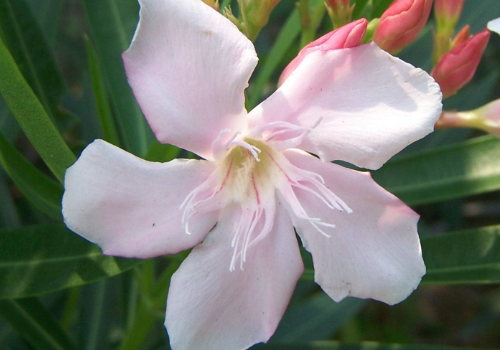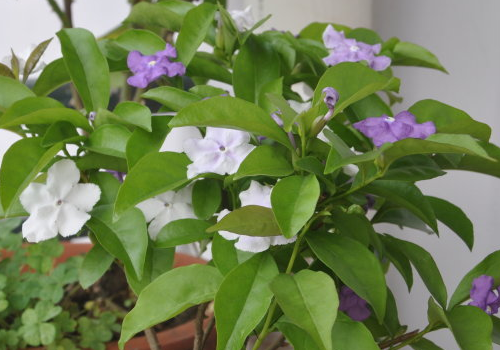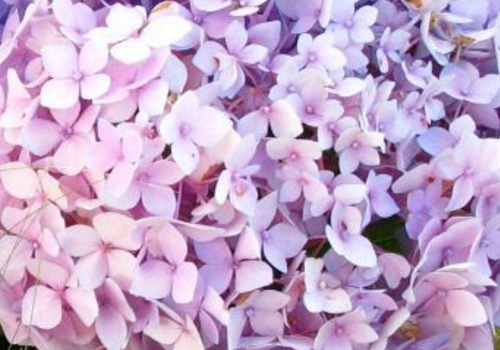How to plant oleander and how to control diseases and insect pests
Oleander is a flower that likes fertilizer and water, neutral or slightly acidic soil. How do you grow oleander? How to prevent and cure oleander diseases and pests?
How to grow oleander:
1. Pruning
The top branch of oleander has the characteristic of one-third, which can be trimmed and shaped according to the need. If you need a trigeminal nine-top shape, you can cut off a part of it at the top of the tripod and you can divide it into nine. If you need nine top eighteen branches, you can leave six branches, cut off from the axils of the top leaves, and eighteen branches can be produced. The pruning time should be after each flowering. In the north, oleander florescence is from April to October. The blooming flowers should be picked in time to ensure the concentration of nutrients.
It is generally divided into four pruning times: first, after Grain Rain in spring; second, in July and August; third, in October, and fourth, in winter. If you want to blossom indoors, move it to the sunshine of about 15 ℃. Prune immediately after flowering, otherwise, the flowers are few and small, or even do not bloom. Through pruning, the branches are evenly distributed, the flowers are colourful and the tree shape is beautiful.
2. Root thinning
The capillary root of oleander grows faster. The three-year-old oleander, planted in a basin with a diameter of 20 centimeters, can grow full of roots before July of that year, forming a ball, hindering the infiltration of water and fertilizer and affecting growth. If the roots are not thinned in time, there will be withering, fallen leaves, death and so on. The best time for root thinning is from early August to late September. At this time, the root is dormant, which is a good opportunity to soothe the root.
Root thinning method: use a fast shovel to cut off the surrounding yellow hair root, and then use a tricuspid hook to sparse along the main root. About half or 1/3 of the yellow hairy roots are removed and replanted in the pot. After thinning the roots, pour water in the shade to keep the basin soil moist. Keep shade for about 14 days, then move to the sun. If oleander is planted in the ground, the yellow hairy root should also be cut around the main pole in mid-September. After cutting the roots, water them and apply thin liquid fertilizer.
3. Fertilizer and water
Oleander is a flower that likes fertilizer and water, neutral or slightly acidic soil. To apply fertilizer, organic soil fertilizer should be maintained, which accounts for about 20% of the basin soil. If it is used in chicken manure, 15% is enough. Fertilization time: one time before Qingming Festival and one time after the Autumn Equinox. Methods: digging annular trenches at the edge of the basin, applying fertilizer and then covering the soil. After Qingming fertilization, bean cake water retted with water was applied every 10 days or so; after the Autumn Equinox applied fertilizer, bean cake water or peanut cake water, or ten times the amount of chicken manure, was applied every 10 days or so. Without the above fertilizer, you can add five to seven times the water in the urine of people who have been mature for more than seven days, pour it along the edge of the basin, and then pour water thoroughly. Fertilizer with more nitrogen, the principle is dilute, light, less, diligent, strictly prevent burning roots.
Proper watering is the key to the management of oleander. Improper watering in winter and summer will cause fallen leaves, flowers, and even death. It is watered once a day in spring and once in the morning and evening in summer, so that the moisture of the basin soil can be kept at about 50%. The leaves should be sprayed with water frequently. If it is too dry, it is easy to lose leaves and wither. Watering can be reduced in winter, but the soil moisture in the basin should be kept at about 40%. The leaves should often be washed with clean water to wash the dust. If it blossoms in winter, it can keep the room temperature above 15 ℃; if it does not blossom in winter, it can drop the room temperature to 7-9 ℃ and put it in the room where there is no sunlight. Oleander planted outdoors in the north needs to be bandaged with herbs to prevent freezing and cold, and remove the cold protection before and after the Qingming Festival. Although oleander is easy to manage, it cannot be paralyzed.
4. Potted plants
Potted oleander requires not only good drainage, but also sufficient fertility. Spring germination needs shaping and pruning, the overgrown branches and delicate branches in the plant can be cut off from the base, the dense branches in the inner chamber should also be sparsely cut, and at the same time, the wound and anti-corrosion film should be smeared on the pruning mouth to protect the wound, so that the branches can be evenly distributed and the tree shape can be kept plump. After 1-2 years, change the basin once, and the basin should be changed after pruning. Summer is the period of vigorous growth and flowering of oleander, which requires a lot of water. In addition to watering each day in the morning and evening, if the pot soil is too dry, one more spray should be added to prevent the twigs from wilting and affecting the flower life. After September, water should be deducted to inhibit the continued growth of the plant, make the branch tissue mature and increase the accumulation of nutrients in order to survive the winter safely. The overwintering temperature should be maintained at 8-10 ℃. When the temperature is below 0 ℃, oleander leaves will fall. Oleander is a fertilizer-loving plant, which should be applied once a month during the growing period in addition to sufficient basal fertilizer.

How to control oleander diseases and insect pests:
1. Brown spot
Harmful symptoms: Brown spot is an important disease on oleander, which occurs everywhere and the harm is serious.
The main damage to the leaves, at the beginning of the leaf tip or leaf edge appeared purplish red dots, after expansion to form round, semicircular to irregular brown spots. There are wheel marks on the disease spot. In the later stage, the center retreated to white, and the edge was wider in reddish brown. When the humidity is high, the grayish brown mildew layer can grow on both sides of the disease spot, that is, the conidiophores and conidia of the pathogen.
Prevention and cure method
Agricultural prevention and control: reasonable close planting, not too close planting; scientific fertilizer and water management, cultivate strong seedlings; remove diseased leaves and burn centrally, reduce bacterial sources.
Chemical control: spraying 1000 times of 50% carbendazim wettable powder or 25% carbendazim wettable powder and 36% thiophanate methyl suspension at the initial stage of the disease.
2. Black spot
Harmful symptoms: the disease spot occurs at the edge or middle of the leaf, semicircular or round. When several disease spots are connected, they are corrugated, both positive and negative, the color of the front is darker than that of the back IN, the disease spot is gray or gray, and the disease spot produces four layers of black powder in the later stage, which usually occurs on the overwintering leaves.
Prevention and cure method
Horticultural control: strengthen management and increase tree potential.
Chemical control: spray 75% chlorothalonil 700 times when needed.
Do you know what's wrong with it.
How to control diseases and insect pests of oleander
Oleander, also known as safflower oleander, willow peach, half a year red. Belongs to oleander family, oleander genus. I often plant at home next time, but I won't notice its diseases and insect pests at that time. Today, I would like to share with you about the prevention and control of oleander diseases and insect pests.
In the spring and summer growing season, the terminal bud of oleander is easy to be harmed by aphids.
Brown spot disease
Brown spot is an important disease on oleander, which occurs widely and does serious harm. The main damage to the leaves, at the beginning of the leaf tip or leaf edge appeared purplish red dots, after expansion to form round, semicircular to irregular brown spots. There are wheel marks on the disease spot. In the later stage, the center retreated to white, and the edge was wider in reddish brown. When the humidity is high, the grayish brown mildew layer can grow on both sides of the disease spot, that is, the conidiophores and conidia of the pathogen.
Prevention and cure method
(1) Agricultural prevention and control.
Reasonable close planting, not too close planting; scientific fertilizer and water management, cultivate strong seedlings; remove diseased leaves and burn centrally, reduce the source of bacteria.
(2) Pesticide control.
At the initial stage of the disease, 50% carbendazim wettable powder was sprayed with 1000 times or 25% carbendazim wettable powder and 36% thiophanate methyl suspension.
Commonly used agents: carbendazim, carbendazim, carbendazim methyl.
The above is the prevention and control of oleander diseases and insect pests.
How to raise Prunus mume Culture methods and Prevention of Diseases and pests
Water plum, native to Southeast Asia, is an evergreen shrub or small tree of the genus Apocynaceae, with elegant and fragrant flowers, which is suitable for garden planting and ornamental plants. Next, let's take a look at how to raise plum, the method of raising plum and the prevention of diseases and insect pests.
Introduction of Mei Mei
Any of various evergreen shrubs or small trees of the genus Apocynaceae. Native to tropical regions from Thailand to Vietnam. Plum is an important hedge plant in Southeast Asia. It is often planted in temples in Thailand, Vietnam and other places. The flowers of plum are elegant and fragrant, so they are suitable for planting and ornamental in the courtyard.
1. Morphological characteristics
Branches and leaves: the branches of water plum are scattered, the leaves are lanceolate and opposite, the leaves are smooth and the leaf margin is wavy.
Flowers: the inflorescence of Prunus mume grows from the tip of the branchlet, the pedicel is slender, 5 white petals, and stamens aggregate.
It is full of white drooping flowers from spring to autumn, especially in the rainy season, when there is plenty of rain, the flowers will give off an elegant fragrance, and the fragrance will be more obvious after rain or in high humidity. The flowering period of water plum is from spring to autumn.
2. Ecological habits
Meimei likes warm climates. All-day or half-day sunshine can grow, the soil must have water retention, and fertile loam is the most suitable for cultivation.
How to raise water plum-- the culture method of water plum
Water should be supplied during the high temperature period in summer, so as not to affect the growth and flowering of the plant. Branches are easy to grow and must be trimmed.
The aerial striping method or cutting method is used for propagation, and the branches are cut at the end of spring or early autumn. The production is mainly based on garden wood specifications of more than 1 foot basin, and there are also a small number of 7-inch basin young plants. Select those with strong trunk and fine branches. Resistant to pruning, good branching, can grow very dense. Take advantage of this feature, so it is also a good material for making bonsai. The garden uses multiple single-plant planting or multi-plant cluster planting, and pruning and shaping. Because the flowers are drooping and the diameter of the flowers is small, they need to be planted nearby for easy appreciation.
Disease Control of Prunus mume
There are many reasons for the falling buds and yellow leaves of Prunus mume. The deficiency of nutrition during the growing period and the imbalance of hormones in plants are internal causes, while conditions such as light, temperature, humidity, fertilizer and water are not suitable, and the invasion of diseases and insect pests are external causes.
1. Soil pH
Sandy soil with pH value from 5 to 6.5 is suitable. Excessive acid or alkali, clayey soil, saline-alkali soil and calcareous soil will make the growth of water plum blossom poor, and some trace elements can not be absorbed. Lack of phosphorus, iron, sulfur and other nutrients in the soil will also form the phenomenon of green deficiency and bud loss. 0.2% ferrous sulfate solution should be sprayed every week.
two。 Do not apply raw fertilizer or thick fertilizer when applying thin fertilizer frequently
From early spring to before flowering, mixed liquid fertilizer of nitrogen and phosphorus can be applied once or twice to prevent buds from falling, but nitrogen fertilizer should not be too much, it should store enough nutrients for flowering in autumn, and flowers can be colorful when flowering. From September to October, thin fertilizers with high phosphorus content, such as chicken manure, were applied every month to achieve the purpose of strengthening buds. Stop fertilizing in November, do not apply fertilizer in the winter dormant period, even if the application of thin fertilizer is also easy to drop buds.
3. Watering
Water plum blossom likes to be moist, avoid stagnant water, the root soil is too wet for a long time, it will suffocate the root, light flower buds will fall, heavy will die. In order to protect the bud, it is necessary to keep the basin soil moist and slightly dry. If it is too dry, the fleshy fibrous root will be dehydrated and withered; if it is too wet, the fibrous root will die of suffocation and decay. When there is no water supply, the plant will drop its buds first and then its leaves. If the basin soil has been too dry, you should first water a small amount of water, so that the basin soil is gradually moist, and then pour through the water, otherwise the root tip will lose water, the big water will not be able to adapt, and you must drop buds. It is not watered until it is about 70% dry in winter, and warm water is needed at noon on a sunny day.
4. Pay attention to adjust the temperature
When the temperature drops close to 0 ℃, move the plum blossom indoors and cover it with a curtain at night to keep warm. It is appropriate to keep 3 ℃ to 5 ℃ during overwintering. More than 16 ℃ will sprout ahead of time and cause deciduous leaves and buds. Below 0 ℃, the buds will freeze. The temperature in the early flowering stage is not less than 5 ℃ to 7 ℃, and the suitable temperature in the flowering stage is 10 ℃ to 15 ℃, with the highest 20 ℃. More than 2 ℃ in winter, can keep the buds, water plum blossom most avoid the temperature difference is too large, sometimes high temperature, sometimes low temperature, the buds will all fall off.
5. Ventilation
Some buds are caused by poor ventilation, especially in winter, long-term indoor, poor ventilation, dirty air or room temperature more than 20 ℃, will also cause deciduous leaves.
6. Control of diseases and insect pests
The diseases of Prunus mume include anthracnose, coal pollution, gray spot and so on, among which anthracnose is the most serious.
The pests of water plum are mainly scale insects. When it is found that diseases and insect pests should be sprayed and controlled in time, otherwise serious bud drop will occur.
- Prev

How to reproduce and prune two-color jasmine
From a realistic point of view, what people plant is no longer what plants can provide for us, but that people take more care of plants, which is a kind of harmony between man and nature, and at the same time, after the material is rich, the improvement of aesthetic sentiment
- Next

Why Hydrangea doesn't bloom? what are the varieties of hydrangea?
Hydrangea flowers, I believe many people have seen, is very beautiful. Why don't hydrangeas bloom? What varieties do you have? Why Hydrangea doesn't blossom: potted hydrangea is not pruned. It is usually necessary to cut the end of the branch in time after the blossom fade, so that it can divide into new branches and wait for the new branches to grow to 8-10 cm.
Related
- Fuxing push coffee new agricultural production and marketing class: lack of small-scale processing plants
- Jujube rice field leisure farm deep ploughing Yilan for five years to create a space for organic food and play
- Nongyu Farm-A trial of organic papaya for brave women with advanced technology
- Four points for attention in the prevention and control of diseases and insect pests of edible fungi
- How to add nutrient solution to Edible Fungi
- Is there any good way to control edible fungus mites?
- Open Inoculation Technology of Edible Fungi
- Is there any clever way to use fertilizer for edible fungus in winter?
- What agents are used to kill the pathogens of edible fungi in the mushroom shed?
- Rapid drying of Edible Fungi

